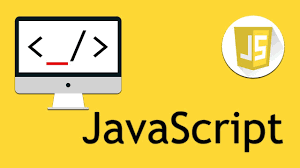
'this', '__proto__' and 'prototype' in JavaScript
How do JavaScript closures work? (stackoverflow)
function sayHello2(name) {
var text = 'Hello ' + name; // Local variable
var say = function() { console.log(text); }
return say;
}
var say2 = sayHello2('Bob');
say2();
// logs "Hello Bob"
- In JavaScript, you can think of a function reference variable as having both a pointer to a function as well as a hidden pointer to a closure. (two pointers)
- In JavaScript, if you use the function keyword inside another function, you are creating a closure. (function inside function => closure)
- In C and most other common languages, after a function returns, all the local variables are no longer accessible because the stack-frame is destroyed. But in JavaScript, if you declare a function within another function, then the local variables of the outer function can remain accessible after returning from it. The genius is that in JavaScript a function reference also has a secret reference to the closure it was created in.
Remove duplicate values from an Array?
Use Set and spreading:
const nums = [1,2,2,3,4,4,4,5];
const newNums = [...new Set(nums)];
console.log(newNums);
How to check if an Object is an Array and Empty?
if (arr && (Object.prototype.toString.call(arr) === '[object Array]' && arr.length === 0)) {
}
How does the this keyword work? (stackoverflow)
ThisBinding
If a function is called on an object, such as in obj.myMethod() or the equivalent obj["myMethod"](), then ThisBinding is set to the object (obj in the example).
In most other cases, ThisBinding is set to the global object.
Build-in Special Functions
The reason for writing “in most other cases” is because there are eight ECMAScript 5 built-in functions that allow ThisBinding to be specified in the arguments list. These special functions take a so-called thisArg which becomes the ThisBinding when calling the function.
Function.prototype.apply( thisArg, argArray )Function.prototype.call( thisArg [ , arg1 [ , arg2, ... ] ] )Function.prototype.bind( thisArg [ , arg1 [ , arg2, ... ] ] )Array.prototype.every( callbackfn [ , thisArg ] )Array.prototype.some( callbackfn [ , thisArg ] )Array.prototype.forEach( callbackfn [ , thisArg ] )Array.prototype.map( callbackfn [ , thisArg ] )Array.prototype.filter( callbackfn [ , thisArg ] )
Arrow Functions: () => {}
Arrow functions (introduced in ECMA6) alter the scope of this. Arrow functions don’t have their own this…. binding.
When invoking context-less function
When you use this inside function that is invoked without any context (i.e. not on any object), it is bound to the global object (window in browser)(even if the function is defined inside the object).
var context = "global";
var obj = {
context: "object",
method: function () {
function f() {
var context = "function";
return this + ":" +this.context;
};
return f(); //invoked without context
}
};
document.write(obj.method()); //[object Window]:global
__proto__ and prototype
- A function is an object in JavaScript.
- EVERY object in JavaScript gets an internal property:
__proto__.( all objects in JavaScript have an internal__proto__property which points to something.) - JavaScript creates a property called
prototypefor a function when you define the function. On each function definition there’s a new property created calledprototype.
A.prototype is TOTALLY DIFFERENT from the __proto__ property.
__proto__
So what does this __proto__ property points to?
- Well, usually another object.
Why does JavaScript has __proto__ property created on every single object?
- Well, one word: delegation.
(When you call a property on an object and the object doesn’t have it, then JavaScript looks for the object referenced by
__proto__to see if it maybe has it. If it doesn’t have it, then it looks at that object’s__proto__property and so on…until the chain ends. Thus the name prototype chain.)
prototype
Why does JavaScript creates a property called prototype for a function when you define the function?
- Because it tries to fool you, yes fool you that it works like class-based languages.
var a1 = new A();
-
What the new operator does is that it sets that proto property to point to the function’s prototype property.
-
We said that
A.prototypeis nothing more than an empty object.
References
- https://stackoverflow.com/questions/3127429/how-does-the-this-keyword-work
- https://stackoverflow.com/a/3127440/2195426
- https://stackoverflow.com/a/17514482/2195426
- https://stackoverflow.com/questions/80084/in-javascript-why-is-the-this-operator-inconsistent